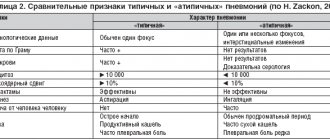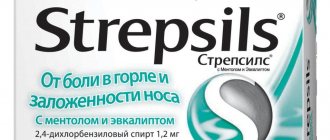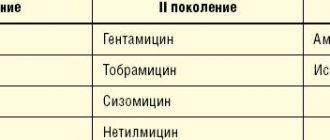The main groups of drugs that are used to treat cough:
- Drugs that improve sputum discharge: expectorants,
- mucolytics.
- central action,
The choice of medication should be individual for everyone. Before you start taking the drug, be sure to consult your doctor.
Expectorants
This group of drugs stimulates the secretion of bronchial glands and the movement of the epithelium, increases the volume of sputum and slightly reduces its viscosity.
Direct action
Resorptive (direct) action drugs directly affect bronchial secretion. They are used in the form of tablets, solutions and mixtures.
- potassium iodide, sodium iodide, sodium bicarbonate, ammonium chloride.
Reflex action
Reflex (indirect) action drugs irritate the stomach receptors, causing a reflex increase in gland secretion and stimulating muscle contraction when coughing. Used in the form of infusions, powder, tablets, dry extract, collections, etc.
- thermopsis herb (Codesan), terpinhydrate (Coldrex), licorice root (Doctor MOM), marshmallow (Mukaltin), guaifenesin (Tussin), ammonia-anise drops and others.
Herbal remedies
Essential oils of medicinal plants have expectorant, anti-inflammatory and weak antiseptic effects.
- thyme herb (Bronchicum), eucalyptus leaf (Pectussin), ivy leaves (Gedelix), licorice (Glyceram), oregano, coltsfoot, elecampane and other plants in various combinations.
A prerequisite for the development of the therapeutic effect of any expectorant medications is regular drinking of water to prevent dehydration.
Side effects and contraindications
The use of some drugs is limited in pediatrics, pregnancy and lactation, carbohydrate metabolism disorders, as well as in the acute period of certain diseases. A complete list of contraindications and restrictions is indicated in the instructions for the drug.
- Stomach. When taken orally, they irritate the gastrointestinal mucosa and increase the secretion of gastric juice, therefore they are not used for gastritis and peptic ulcers.
- Allergy. Plant extracts often cause allergic reactions and are contraindicated in bronchial asthma.
- Vomit. Reflex-action drugs strengthen not only the cough reflex, but also the gag reflex. Large doses cause nausea and vomiting. Young children, as well as those with central nervous system damage, should not use them, as respiratory arrest may occur.
- For children. Medicines from these groups significantly increase the volume of secretions. But small children are not able to fully expectorate sputum themselves. This can lead to congestion in the bronchi and re-spread of infection.
Warning signs
Cough can be a symptom of non-inflammatory and non-infectious diseases, so prolonged cough in young patients that does not respond to conventional treatment and prolonged cough in elderly patients are important indications for a thorough medical examination. In this case, it is first of all important not to miss tumor and lymphoproliferative diseases. Such a pharmacy client should be advised to urgently visit a doctor. In childhood, a barking cough caused by swelling of the larynx cannot be cured with syrups either; we send such clients to a pediatrician.
The variety of types of cough syrups often confuses pharmacy visitors. In the absence of a doctor's prescription, the primary care provider must help the client make the right choice among over-the-counter syrups. Prescription drugs include all bronchodilators and antitussives that inhibit the cough reflex. Thus, you will have to choose among expectorant syrups that enhance or facilitate the separation of bronchial mucus (sputum) when coughing. Mucolytic cough syrups facilitate the production of sputum, and secretory syrups increase its secretion. Thus, the former are used for wet coughs, and the latter for dry coughs.
Mucolytics
Modern drugs, which are mainly prescribed for infectious and inflammatory diseases of the respiratory system, combine mucoregulatory and mucolytic properties, and also have a secretomotor effect.
- Mucolytics change the physicochemical properties and structure of bronchial mucus, causing it to liquefy and facilitate the removal of sputum.
- Mucoregulators change the ratio of liquid and dense parts of sputum, stimulate the synthesis of lysozyme by the epithelium and the formation of surfactant in the lungs.
Proteolytic enzymes
These drugs break down protein and polypeptide molecules. They are capable of thinning even thick purulent sputum, acting in affected tissues without affecting healthy ones. Such drugs are often administered by inhalation, intratracheal and intrabronchial routes.
- trypsin, chymotrypsin, ribonuclease, dornase alpha.
Synthetic drugs
The drugs bromhexine, ambroxol (Ambrobene, Lazolvan), acetylcysteine (ACC, Fluimucil), carbocysteine and their analogues combine several properties and are widely used by specialists. Such drugs are optimal for the treatment of respiratory diseases and cough, especially in children. On the pharmaceutical market there is a large selection of release forms for different ages: syrups, solutions and drops, tablets and dragees.
Side effects of mucolytics
- Taking mucolytics can provoke allergic reactions, pulmonary hemorrhages, bronchospasm, and impair liver and kidney function.
- Use is limited to children under 3 years of age, pregnant and nursing mothers, and persons with liver and kidney diseases.
- Mucolytics, like expectorants, are undesirable to prescribe to bedridden patients due to the accumulation of liquid secretions and the effect of “flooding” the lungs.
- The clinical effect when taking expectorants and mucolytics is observed, as a rule, after 4-8 days. Before this, there may be an “imaginary deterioration” of the condition.
How to deal with dry and wet cough?
When treating cough, an integrated approach
to therapy. Therefore, it is important to follow the following recommendations.
- Take cough medicine as prescribed by your doctor. Depending on the type of cough, the age of the patient and other factors, drugs with different effects and different forms of release may be prescribed (children's antitussive syrups, herbal lozenges, etc.).
- One of these products is Doctor MOM® syrup. The “FITO BRONHO 10 formula”1 included in its composition facilitates the removal of mucus, preventing its stagnation, and also fights inflammation - the cause of cough.
- Control the humidity level in the room. Sufficient humidity (not lower than 60%) will prevent drying out of the mucous membranes of the nose and throat, which will ease coughing attacks.
- Do chest massage. It stimulates mucus secretion and relieves cough.
Antitussives
Central action
narcotic drugs suppress the cough reflex in the medulla oblongata and depress the respiratory center. They are addictive.
- codeine (Codelac), morphine, ethylmorphine hydrochloride, dextromethorphan (Grippex).
Non-narcotic - have an antitussive and antispasmodic effect, without depressing breathing and without causing addiction.
- butimirate (Intussin, Sinekod), glaucine (Broncholitin, Glauvent), oxeladine (Tusuprex, Paxeladin).
Peripheral action
They act as mild analgesics on the receptors of the respiratory mucosa and reduce the cough reflex. One of the most important effects of medications in this group is hydration of the mucous membranes. They are used in the form of aerosols and steam inhalations to reduce the viscosity of secretions and against irritation of the mucous membrane.
Local anesthetics are used mainly in hospitals to stop the cough reflex during bronchoscopy.
- benzocaine, tetracaine, lidocaine, prenoxdiazine (Libexin).
Enveloping preparations of plant origin are used for irritation of the mucous membrane of the upper respiratory tract. They create a protective layer for the mucous membrane of the nasopharynx and oropharynx, which reduces the cough reflex.
- extracts of eucalyptus, acacia, wild cherry, various infusions, syrups, teas, lozenges, lozenges, honey.
Inhalation of water vapor with the addition of various components (sodium chloride, sodium bicarbonate, ammonium chloride, plant extracts) is the most common way to moisturize the mucous membranes.
Dry cough in a child
A dry cough usually occurs against the background of a respiratory disease and is localized in the upper part of the respiratory tract. With this type of cough, no sputum is produced.
At the beginning of an acute respiratory infection (ARI), the cough is dry, debilitating, and the general condition of the body worsens. At this stage, complete cleansing of the respiratory tract does not occur, but after a few days, sputum gradually begins to be released from the bronchi.
However, this does not always happen. In some cases, a dry cough can last up to 3 weeks or more. The likely cause of this cough is inflammation . A reflex urge to cough leads to an intensification and spread of the inflammatory process of the throat or larynx.
A prolonged dry cough that lasts for weeks without any fever or weakness is most often a sign of an allergic reaction to animal hair, dust, or tobacco smoke.
Diagnosis of bronchitis
Bronchitis is a clinical diagnosis, that is, the doctor makes it only on the basis of a survey and examination of the patient. The presence of typical complaints (runny nose, cough, malaise, fever) and typical wheezing when listening to the lungs with a stethoscope, as well as the absence of other reasons that explain these symptoms, is a necessary and sufficient condition for diagnosing bronchitis. Wheezing during bronchitis is symmetrically scattered over the entire surface of the lungs, and not localized only in one area (as happens, for example, with lobar pneumonia). Wheezing can be dry (occur when air passes through narrowed, swollen bronchi without phlegm) and wet (occur when air passes through the bronchi in which phlegm accumulates). Often, both types of wheezing are present at the same time, or dry wheezing is heard in the first days of the disease, then, as the natural course of the disease progresses, they turn into wet wheezing.
Wet cough in a child
Cough with sputum is characteristic of a number of serious diseases: from acute respiratory viral infections to pneumonia and tuberculosis. Foreign particles, toxins, and bacteria are removed from the respiratory tract with sputum. It is important to pay attention to the color and consistency of the mucus coming out:
- white thick is characteristic of ARVI;
- clear mucus is characteristic of bronchial asthma, allergic reactions, heart diseases;
- yellow mucus occurs during purulent processes;
- a rusty color indicates damage to small capillaries in the lungs, which is typical for pneumonia;
- a greenish tint indicates pneumonia, purulent bronchitis;
- brown color is characteristic of tuberculosis and lung tumors.
Of course, it is impossible to make a diagnosis based solely on the type of sputum. Competent consultation with a specialist (pediatrician, pulmonologist, otolaryngologist) and tests are always necessary.
Stoptussin
A popular remedy for dry cough, it is mucolytic and inhibits the cough reflex.
Pros:
- High efficiency
- Relieves dry cough
- Facilitates the process of coughing
Minuses:
- Huge list of contraindications
- Many side effects (drowsiness, rash, loss of appetite, etc.)
- Contraindicated for chronic cough
Faliminitis
Faliminitis is an antiseptic, antitussive drug. Reduces pain in the throat and chest, eliminates irritation of the mucous membrane and fights dry cough. After use, experts recommend not consuming food and water for a short time. It is strictly prohibited for pregnant women and mothers during the feeding period.
pros
- Has a fast action
- Conducts disinfection
- Highly beneficial for dry cough
Minuses:
- Prohibited for pregnant women and young children








![Table 3. Pharmacokinetic and pharmacodynamic parameters of fluoroquinolones with a single standard dose taken orally [7, 13]](https://irknotary.ru/wp-content/uploads/tablica-3-farmakokineticheskie-i-farmakodinamicheskie-parametry-ftorhinolonov-pri-odnokratnom-prieme-330x140.jpg)
